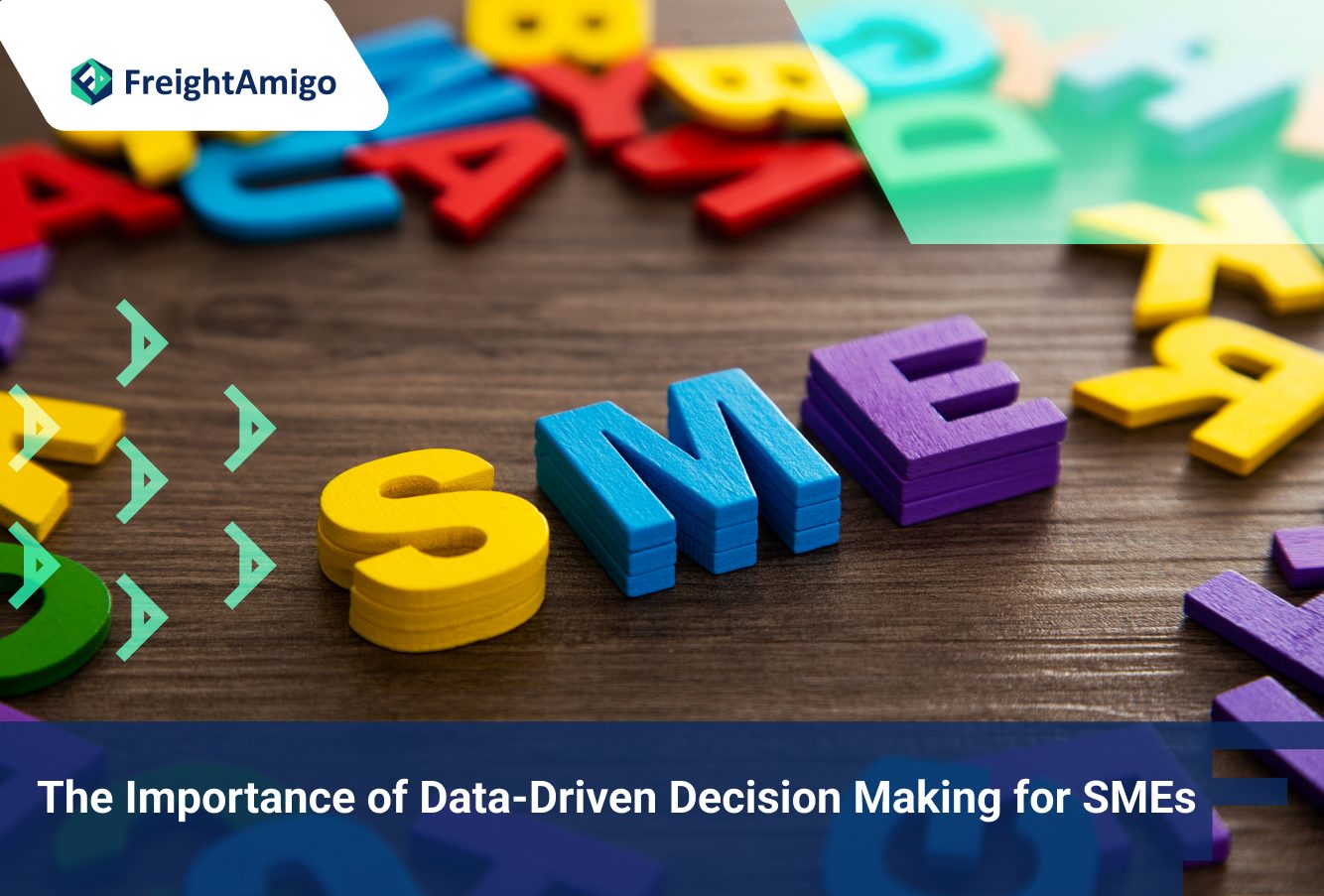Data is essential for businesses, including small and medium-sized enterprises (SMEs), in today’s digital age. SMEs must use data to make informed decisions and stay competitive in a rapidly evolving business landscape. By harnessing the power of data, SMEs can gain valuable insights into their operations, customers, and market trends.
Latest update on 28 February, 2024 by Caspian Ng – Marketing Analyst at FreightAmigo
Want to compare the best Express, Air Freight, Sea Freight, Rail Freight & Trucking rates so as to have better control on cost?
The Benefits of Data-Driven Decision Making
- Enhanced Customer Understanding
One of the key advantages of data-driven decision making for SMEs is the ability to gain a deeper understanding of their customers. By analyzing customer data, such as purchase history, demographics, and preferences, SMEs can segment their customer base and tailor their products, services, and marketing efforts to specific target audiences. This level of personalization not only improves customer satisfaction but also increases the chances of repeat business and customer loyalty.
- Improved Operational Efficiency
Data-driven decision making can also help SMEs optimize their operational processes and improve efficiency. By analyzing operational data, such as production rates, inventory levels, and resource utilization, SMEs can identify areas of inefficiency and implement targeted improvements. For example, data analysis may reveal bottlenecks in the supply chain, allowing SMEs to streamline their logistics and reduce costs. Moreover, data-driven insights can help SMEs identify and eliminate wasteful practices, leading to increased productivity and profitability.
- Accurate Demand Forecasting
Accurate demand forecasting is crucial for SMEs to ensure optimal inventory management and production planning. By analyzing historical sales data and market trends, SMEs can predict future demand and align their production and procurement processes accordingly. This prevents overstocking or understocking, reduces wastage, and enables SMEs to meet customer demands in a timely manner. With data-driven demand forecasting, SMEs can avoid costly stockouts and minimize inventory holding costs, leading to improved cash flow and profitability.
- Effective Marketing and Sales Strategies
Data-driven decision making empowers SMEs to develop effective marketing and sales strategies. By analyzing customer behavior data, SMEs can identify patterns and preferences, allowing them to create targeted marketing campaigns and personalized messaging. For example, data analysis may reveal that a specific customer segment responds well to email marketing, while another segment prefers social media advertising. By tailoring their marketing efforts to specific channels and target audiences, SMEs can maximize their return on investment and achieve higher conversion rates.
- Competitive Advantage
In a highly competitive business landscape, gaining a competitive advantage is essential for the success of SMEs. Data-driven decision making provides SMEs with valuable insights into their competitors, market trends, and emerging opportunities. By monitoring and analyzing market data, SMEs can identify gaps in the market, understand consumer preferences, and develop innovative products or services to meet those needs. This proactive approach to decision making gives SMEs a competitive edge, allowing them to differentiate themselves from competitors and capture a larger market share.
Implementing Data-Driven Decision Making
- Data Collection and Integration
The first step in implementing data-driven decision making is to collect relevant data from various sources. This may include customer transaction data, website analytics, social media data, and industry reports. It is important for SMEs to ensure the accuracy and integrity of the data by using reliable data collection methods and implementing data validation processes. Additionally, integrating data from different sources into a centralized database or data management system enables SMEs to analyze and derive insights from the data effectively.
- Data Analysis and Visualization
Once the data is collected and integrated, SMEs need to analyze it to uncover meaningful insights. This involves using statistical techniques, data mining, and machine learning algorithms to identify patterns, trends, and correlations within the data. Data visualization tools can also be used to present the findings in a clear and concise manner, making it easier for decision-makers to understand and interpret the data. By visualizing data through charts, graphs, and dashboards, SMEs can quickly identify areas that require attention and make data-driven decisions based on the insights gained.
- Building a Data-Driven Culture
Implementing data-driven decision making requires a cultural shift within the organization. SMEs need to foster a data-driven culture where employees are encouraged to use data in their decision-making processes. This involves providing training and resources to employees, promoting data literacy, and creating a collaborative environment where data-driven insights are valued and shared across teams. Furthermore, SMEs should appoint data champions or data stewards who are responsible for driving data initiatives and ensuring data governance and compliance within the organization.
- Data Security and Privacy
As SMEs collect and analyze customer data, it is crucial to prioritize data security and privacy. SMEs should implement robust data protection measures, such as encryption, access controls, and regular data backups, to safeguard customer information. Compliance with data protection regulations, such as the General Data Protection Regulation (GDPR), is also essential to maintain customer trust and avoid legal repercussions. By prioritizing data security and privacy, SMEs can build strong customer relationships and enhance their reputation in the market.
- Continuous Improvement and Optimization
Data-driven decision making is an ongoing process that requires continuous improvement and optimization. SMEs should regularly review and evaluate their data analytics processes and tools to ensure they are aligned with business goals and objectives. By monitoring key performance indicators (KPIs) and conducting regular data audits, SMEs can identify areas for improvement and refine their data-driven decision-making strategies. Additionally, leveraging emerging technologies, such as artificial intelligence and predictive analytics, can further enhance the accuracy and effectiveness of data-driven decision making.
Conclusion
In conclusion, data-driven decision making is vital for SMEs looking to thrive in today’s competitive business landscape. By harnessing the power of data, SMEs can gain valuable insights into their customers, operations, and market trends, enabling them to make informed decisions and stay ahead of the competition. Implementing data-driven decision-making processes involves collecting and integrating data, analyzing and visualizing insights, building a data-driven culture, prioritizing data security and privacy, and continuously improving and optimizing data analytics strategies. By embracing data-driven decision making, SMEs can unlock new opportunities, enhance operational efficiency, and achieve long-term growth and success.
Visit the FreightAmigo website to gain valuable insights into their customers, operations, and market trends, driving growth for SMEs institutions.
Read More:
Promoting Sustainability & Eco-Friendly Logistics Practices
【Insurance & Risk Management】 The Transformative Power of Data-Driven Cargo Insurance
If you have any inquiries on logistics/supply chain, feel free to contact FreightAmigo now:
Chat with us online | Hotline: +852 28121686 | WhatsApp: +852 27467829



